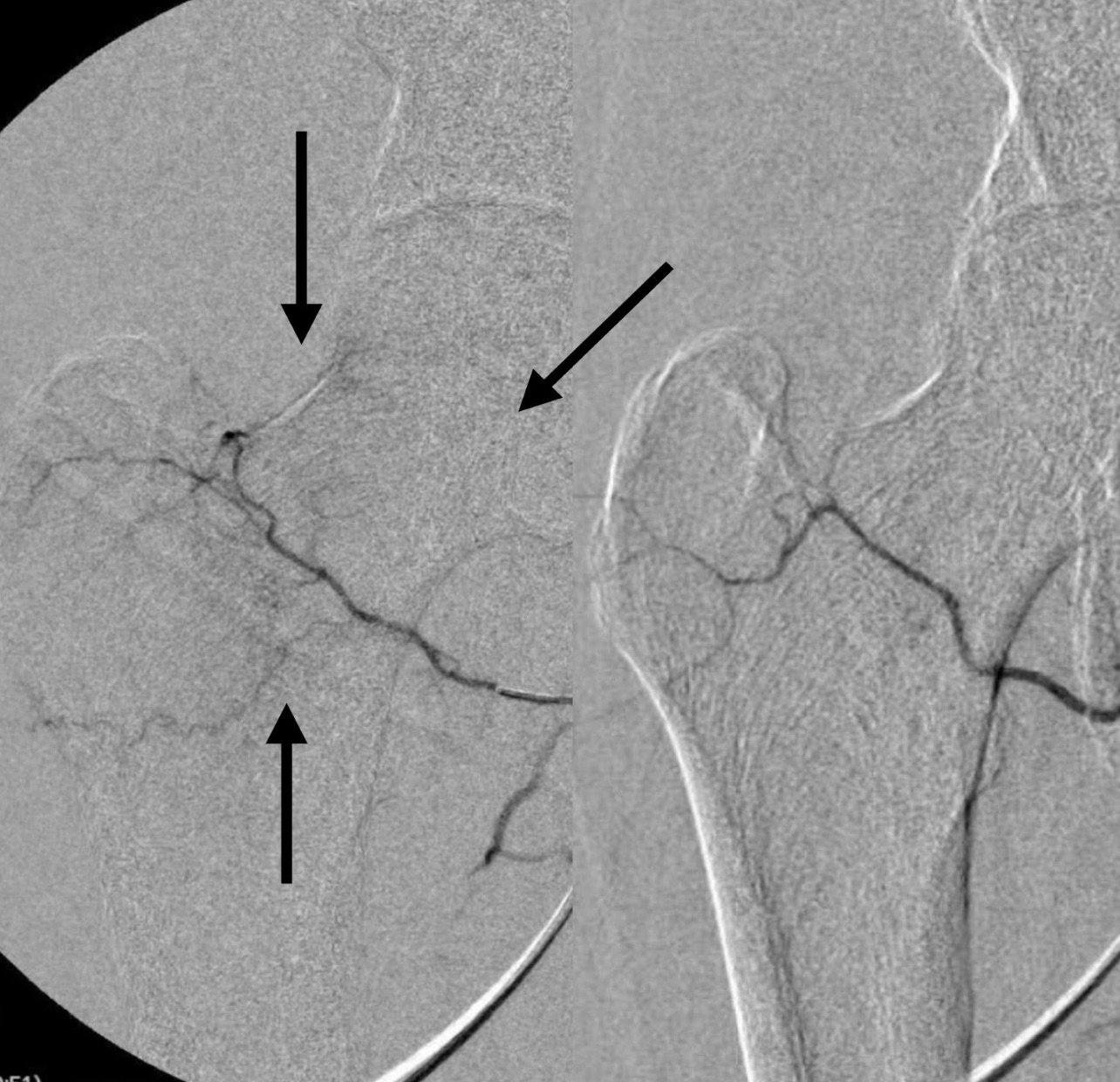Hip Embolization
Introduction to Hip Embolization
Hip embolization is a minimally invasive procedure designed to relieve pain caused by hip osteoarthritis or greater trochanteric bursitis. It involves selectively blocking the blood vessels that supply blood to the inflamed areas of the hip joint. By reducing the blood flow, the procedure helps decrease inflammation and pain in the affected joint.
What is Hip Embolization?
Hip embolization is performed by an Interventional Radiologist, a specialist trained in minimally invasive, image-guided treatments. Using advanced imaging techniques, the physician guides a catheter to the specific blood vessels of the hip, reducing blood supply to inflamed tissues.
Who Needs Hip Embolization?
Hip embolization is generally recommended for patients experiencing chronic hip pain that does not respond to conventional treatments such as medication, physical therapy, or injections. The procedure may be suitable for individuals who:
- Have chronic hip pain due to osteoarthritis or greater trochanteric bursitis.
- Are seeking an alternative to hip replacement surgery.
- Prefer a less invasive option with shorter recovery times.
Benefits of Hip Embolization
- Pain Relief: Hip embolization can offer significant relief from hip pain associated with osteoarthritis or bursitis.
- Minimally Invasive: The procedure requires no large incisions and is performed through a small puncture in the groin.
- Faster Recovery: Patients can typically return home the same day and resume normal activities faster than with traditional surgery.
The Hip Embolization Procedure
1. Preparation
The procedure is generally performed under local anesthesia with mild sedation. Imaging tests, such as an MRI or CT scan, may be conducted to assess the hip joint and plan the treatment.
2. Procedure Steps
- Catheter Insertion: A small catheter is inserted into the common femoral artery in the groin area.
- Guided Navigation: Using fluoroscopic guidance (real-time X-ray), the catheter is navigated to the blood vessels supplying the inflamed area of the hip.
- Embolization: Tiny particles or beads are released through the catheter to block the blood vessels, reducing blood flow to the inflamed tissues.
3. After the Procedure
The catheter is removed, and a suture-mediated closure device is applied to the insertion site. Patients are monitored for a short period before being discharged, typically on the same day.
Risks and Complications
While hip embolization is considered safe, potential risks include:
- Infection at the insertion site.
- Bruising or soreness around the catheter site.
- Allergic reactions to contrast agents used during the procedure.
- Rare risks include damage to surrounding tissues or blood vessels.
When to Contact Your Doctor:
- Severe pain or swelling at the insertion site.
- Signs of infection (redness, swelling, drainage).
- Any numbness, weakness, or tingling in the leg.
Post-Procedure Care
Patients are usually advised to rest and avoid strenuous activities for a few days after the procedure. Follow-up appointments will be scheduled to monitor the effectiveness of the embolization and manage any side effects. Physical therapy may be recommended to restore mobility and strength in the hip joint.
Conclusion
Hip embolization offers a promising, minimally invasive alternative for individuals seeking pain relief from hip osteoarthritis or greater trochanteric bursitis without undergoing major surgery. Consult with a healthcare provider to determine if this procedure is suitable for your specific condition.

Prostate/IR Centers LLC, do not duplicate without permission.
Arrows on the left pointing to the hypervascularity that causes pain in patients with Hip arthritis.
Revolutionizing Hip Arthritis Treatment with Minimally Invasive Embolization
Contact us to request an appointment or ask a question. We're here for you.



